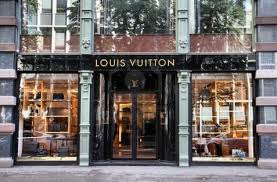Translating Luxury in the Digital Space
Luxury brands have been among the last to embrace ecommerce, and not without good reason. Much of the value associated to high-end products is directly related to the traditional boutique purchasing experience: exclusivity, superb customer service, and lavish décor. Loyal merchant-customer relationships are nurtured over time through perks and VIP treatment.
Recreating this experience through a website is no easy task; however, the digital opportunity to reach audiences is no longer being snubbed by the luxury sector. An article recently published on Internet Retailer, states that 81% of 42 major luxury brands now offer ecommerce solutions.
Slow economic times have pushed brands to look for new opportunities to boost profits by selling directly online. Additionally, consumers are becoming increasingly accustomed to the online shopping experience, particularly when it is paired with impressive technological innovations.
Read on for our analysis of successfully launching an online luxury business.
VS.
Looks do Matter:
Just like a standalone store, luxury brands should incorporate digital aesthetic elements that convey the story and value of the brand. A visually appealing site that doesn’t stray from the brand’s original look will ensure that users will never have to question whether they are in the right location.
Displaying imagery that accurately represents the quality of the products is also crucial. Customers will not be convinced to purchase expensive items online if they are seeing poor quality images. Multiple views, zoom, and even video should be included on product detail pages.
Emphasis on Inclusiveness:
While the appeal of luxury goods is partially attributed to exclusivity, just the opposite may work in the online environment. Because it is harder to connect with customers in the digital space, including exclusive brand content and opportunities for customers to feel involved can act as a substitute for the personalized customer service seen in boutiques. Examples are:
- Share “behind the scenes” images and video.
- Develop an ecommerce loyalty program.
- Provide options for user engagement through social networks.
Accessibility to Information & Service:
The decision to make high-end purchases online is not one that comes easily, so retailers should do everything possible to facilitate the process and make customers feel secure. Accessible customer support should be visible throughout the site in every way possible: phone, email, FAQ’s, live chat. List all product information and answer any foreseeable questions on the product detail pages.
Highlight Convenience:
For consumers, convenience is the leading factor that pushes them in the digital direction. Many online purchasers of high-end goods have a specific product in mind that they may even have previously seen in person. A website offers immediate access to sought-after products to anyone with an Internet connection.
Incorporating good usability is necessary to remind users that shopping online on the couch is far more convenient than locating an item in a store. Advanced account options should be offered so that users can save shipping and billing information. As in all ecommerce sites, the checkout and return processes should be simple and easy.
As technology continues to innovate, we are excited to see how luxury brands transform online. Look out for our next Client Spotlight post where we’ll review how a few of our clients have represented their brand online.





